En janvier 2016, une équipe internationale et interdisciplinaire formée par P. López-García et son équipe Diversité, Ecologie et Evolution Microbiennes (Unité d’Ecologie, Systématique et Evolution, CNRS – Université Paris-Sud) a réalisé une expédition scientifique au dôme de Dallol, dans la dépression de Danakil, en Ethiopie, un environnement unique sur la planète. Accompagnés du photographe et réalisateur Olivier Grunewald et son équipe, cette mission avait un double objectif. D’une part, un objectif scientifique. Situé sur le rift qui traverse la région Afar, l’un des deux endroits au monde où la croûte océanique émerge en surface, il s’agit d’un environnement multi-extrême unique qui combine très fortes températures (jusqu’à 115°C), très bas pH (souvent des valeurs négatives), saturation en sels divers (30-50%) et présence de gaz toxiques. C’est donc un site privilégié pour étudier les limites de la vie microbienne et pourrait constituer un bon analogue des environnements de la Terre primitive. D’autre part, un objectif de préservation. En effet, cette région a une valeur environnementale unique (avec son intérêt scientifique et sa panoplie de paysages incroyables), mais aussi anthropologique (la population afar continue à exploiter le sel de la région telle qu’elle l’a fait pendant des millénaires en organisant les fameuses « caravanes du sel » dans cette région inhospitalière) qu’il convient de préserver face à une exploitation minière grandissante dans la zone.
Afin de sensibiliser le public et surtout les autorités afar et éthiopiennes, Olivier Grunewald réalise un reportage sur cette expédition. Par ce biais, nous souhaitons contribuer à ce que les autorités afar sollicitent auprès de l’UNESCO, que celle-ci déclare la région de Dallol Patrimoine de l’Humanité. Notre mission a bénéficié du soutien de la Fondation Iris / Fondation de France, très sensible à des problématiques de dégradation de sites à forte valeur patrimoniale. Si vous souhaitez contribuer à la réalisation du montage de ce documentaire, un projet collaboratif est ouvert – vous pourrez voir quelques images prises par Olivier Grunewald :
http://www.kisskissbankbank.com/expedition-dallol-aux-frontieres-de-la-vie
D’autres liens en relation avec cette expédition :
http://www.francetvinfo.fr/sciences/decouverte-de-la-vie-a-dallol_1456529.html
Dallol, a unique (but threatened) multi-extreme environment on Earth
In January 2016, an international multidisciplinary team headed by P. López-García and several members of her ‘Microbial diversity, ecology and evolution’ (Ecology-Systematics-Evolution laboratory, CNRS-Université Paris-Sud) carried out a scientific expedition to Dallol, a unique, multi-extreme site on Earth, located at the Danakil depression in Ethiopia. Accompanied by the photographer and film director Olivier Grunewald and his team, this expedition had a double objective. First, scientific. Located at the rift traversing the Afar region, one of the two places on Earth where the oceanic crust emerges at the surface, Dallol is characterized by combining several physico-chemical extremes, including high temperatures (up to 115°C at the surface), very low pH (often negative values), salt saturation (30-50%) and toxic gases. It is therefore a privileged environment to study the limits of life on Earth and might constitute an appropriate analog of some environments of the early Earth at the time when life arose. The second objective is to promote the preservation of a site with high heritage value, which must be protected face to an increasing mining activity in the area. Indeed, Dallol does not only have a unique environmental value, with its associated scientific interest and its incredible landscape, but has also anthropological value. The Afar population continues to exploit the salt as it has done for over millennia (salt blocks from Danakil have been found in Egyptian pyramids), organizing the famous « salt caravans » in this inhospitable region.
In order to sensitize the broader public and the Ethiopian authorities, Olivier Grunewald is producing a documentary on this expedition. Our aim is to push the Afar authorities to raise a petition to UNESCO to list Dallol as World Heritage Site. Our expeditions benefited from the support of the Fondation Iris / Fondation de France, which is concerned by threatened heritage natural sites. If you want to contribute to the post-production of this documentary (mounting, mixing, distribution), a collaborative project is open – you will find some images by O. Grunewald:
http://www.kisskissbankbank.com/expedition-dallol-aux-frontieres-de-la-vie
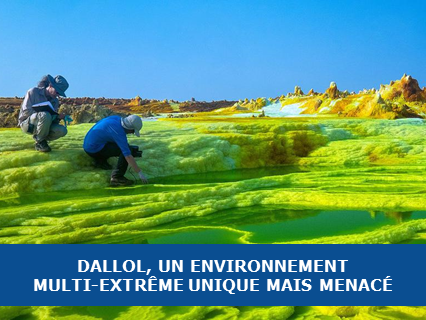
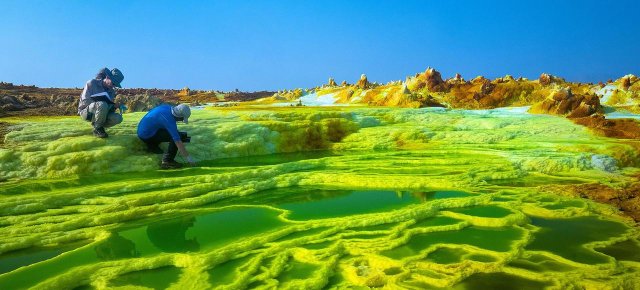
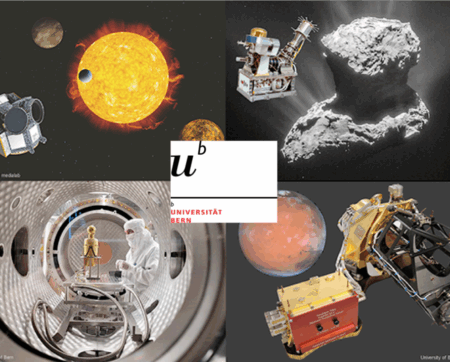
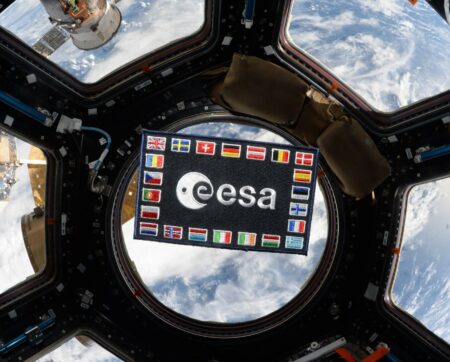

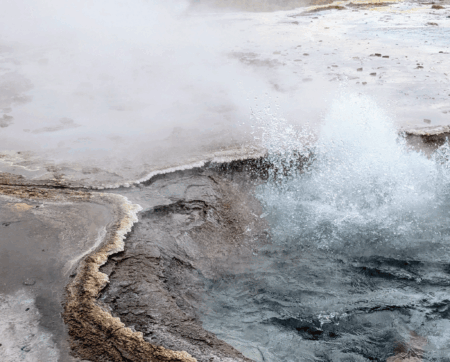
Aucun commentaire sur l'article Dallol, un environnement multi-extrême unique (mais menacé) sur Terre